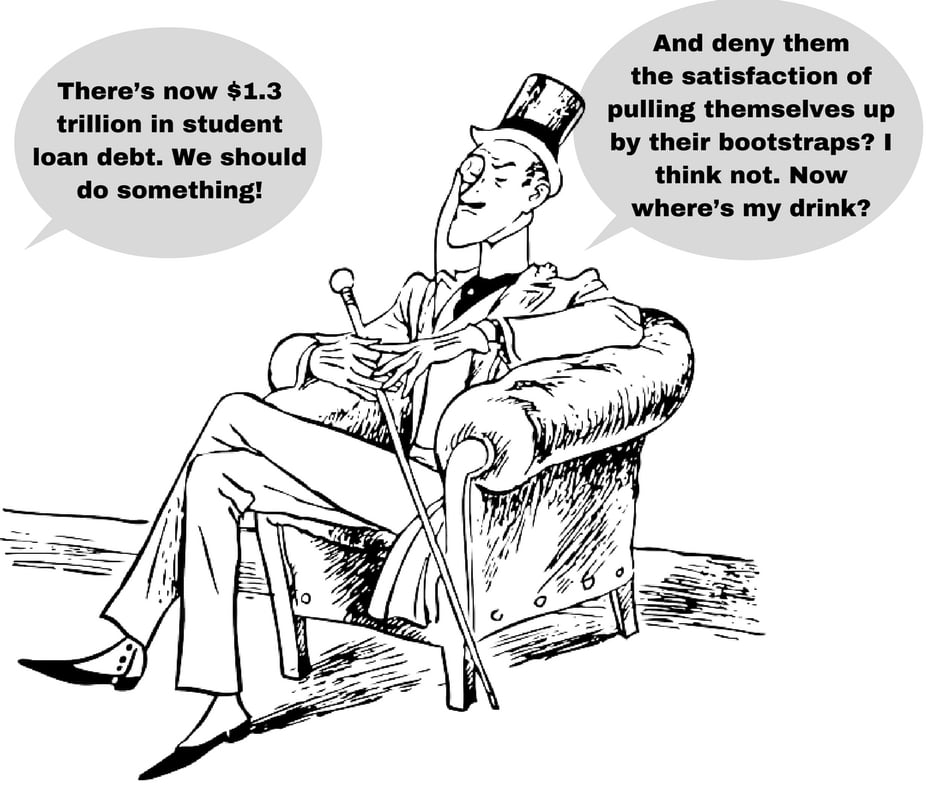There’s an easy way and a hard way to do just about everything in life. However, the things most worth doing are almost always more difficult.
For instance, it’s hard to go to school, work a job to pay for it, and then come home and study at the end of it all. It’s much easier to kick your feet up when you get home and drink a beer in front of the TV.
Moreover, it’s a lot of work to make college more affordable. It’s much easier to just keep things the way they are.
Today we’re talking about writing a thesis, and truth be told, it’s quite easy to write a good one. Maybe not at first, but once you have a bit of experience, you start to catch on to the formulaic nature of the thesis statement.
Once that happens, it’s easy to churn out a decent thesis statement for each paper you write. It is, however, much more difficult to write a great thesis.
To do so, you have to dig deeper into your subject, narrow your focus, and clearly state the direction your essay will take.
So let’s take a look at how we can turn a good thesis statement into a great one.
What Is the Point of a Thesis?
First and foremost, let’s brush up on our understanding of the thesis statement: what is it, and why do we need it?
The thesis is by far the most important sentence you will write for your paper. It’s the director, the backbone, and the glue of your essay. Without it, your paper will be sloppier than the hyponutritional fare we serve in school cafeterias.

Located at the end of your introduction, the thesis tells the reader what your paper is about. In an expository paper, the thesis will present your explanation of the topic at hand. In the case of an analytical paper, it will include your analysis.
And in the most common essay type, the argumentative essay, the thesis presents your argument.
The thesis is broken into claims. These are the various parts of your argument or analysis. Each section of the body of your essay will correspond to one of these claims.
In the case of the five-paragraph essay (which contains an introduction, three body paragraphs, and a conclusion), you will have three claims in your thesis, one for each of the body paragraphs.
So as you can see, the thesis lays out the main points that will be discussed later in the paper. Without a strong thesis statement, your reader will get lost faster than a millennial without GPS.
A good thesis statement will present your points so that the reader has a general idea of what to expect. A great thesis statement will clearly present your specific ideas in a logical order that gives your reader a strong sense of the direction your paper will take.
The Thesis Formula
Because argumentative essays are the most common essay type, we’re going to focus on them as we describe how to write a great thesis.
As we mentioned earlier, an argumentative thesis presents your argument. This is the driving force of your entire paper, so we need to get it right.
The first part of your thesis addresses the focus of your paper. This is the who or what on which your paper focuses. Who are you speaking to? For example, you could be addressing Americans, the government, or the middle class.
After addressing those who are the focus of your paper and thesis, you should state the debatable topic and your position for or against it. For example, you may be writing your paper on student loan debt. This is the debatable topic.
You may think student loans and the corresponding debt are a good thing. Or you may be against student loan debt. Either way, you must clearly choose your position in the thesis, or the debate will be off to a weird start.

Next comes the most important part of your thesis: your claims. If the thesis is the backbone of your paper, the claims are the vertebrae.
Each claim must support your stance on the issue, for or against. Claims will serve as the main reasons for your argument, and you will use them to argue your case.
Your thesis will look something like this:
The (focus of your paper) should be (for/against) (debatable topic) because it (claim 1), (claim 2), and (claim 3).
Skip to the “good” section below to see what that thesis looks like after we fill in the blanks.
The Great, the Good, and the Ugly
Let’s look at some examples of a great, a good, and an ugly thesis. We’re going to go in reverse order here so that we can see how to improve from ugly to great.
Let’s stick with our student debt theme and assume we’re writing an argumentative thesis against the current levels of student loan debt.
The ugly
Well, this can go in a lot of directions. Of course, the worst thesis is the one that your reader cannot find, either because it’s unclear or because you haven’t written one at all.
There are a couple important points to keep in mind: the thesis statement is one sentence and located at the end of your introduction. By adhering to these simple facts, you’re already over a big hurdle.
But you’re not completely in the clear. There are mistakes that even the most well-intentioned writer can make when crafting a thesis.
Check out this example of a simple thesis statement:
The current level of student loan debt that graduates face is bad for many reasons.
So here, you have stated the debatable topic and come out against it. However, that’s about where the thesis stops.
The reader is left with many questions: Why is it bad? What are the reasons? Who should take heed of this issue? Without any claims, this is an ugly thesis.
So the next step in making this a good thesis is to add claims.
The good
When we clearly address the person or entity who should be concerned with our argument and add in some claims, we start to see the makings of a good thesis statement.
The United States government should be against the current level of student debt because it hurts young professionals’ careers, it hurts the economy, and it hurts college enrollment.
This is so much better than our ugly thesis, but I wouldn’t call it great for one important reason: the claims are too vague. And like doctors, a thesis is better without ambiguity.
The reader has a general idea of where the paper is going but will still wonder about the specifics behind each claim.
Why would the debt hurt young professionals’ careers? In what way does it affect the economy? And we’re talking about graduates, so how could it affect enrollment?
It’s true that the reader could find these answers by continuing to read the rest of your paper, but it’s better for your reader to know the answers after reading the thesis and before looking to the body paragraphs for the data, the proof.
The great
So what does a great thesis look like? It has all the same aspects of a good thesis but is more focused.
The United States government should be against the current level of student debt because it prevents young professionals from pursuing lower-paying careers, it hurts their ability to buy homes and start families, and it even prevents some students from going to college at all.
Now that’s a great thesis! The reader has a great idea of precisely what the essay will address.
Before moving to the body paragraphs, the reader is already pondering your main ideas:
- Many graduates can’t take jobs in teaching or public service because of their debt.
- They can’t make big purchases that would boost the economy because their money goes to student loan payments.
- Worst of all, some qualified students skip college altogether because of the exorbitant prices.
The reader knows exactly what to look for while reading the rest of your essay. Each section of the body will address one of these claims, providing evidence that it’s true.
Now, keep in mind, the claims in your thesis must correspond to the body of the paper. If they don’t, your reader will be angry, and your thesis will quickly be thrown back into the ugly category.
As you can see, the difference between a good thesis and a great thesis isn’t nearly as wide as the difference between a good and an ugly thesis.
So it’s no wonder that many people fall into the ease of writing a good thesis statement instead of pushing themselves to write a great one.
Need More Help Transforming a Good Thesis Statement Into a Great One?
While I hope this post helps make the distinctions clear for you on the strength of your thesis, there are additional resources at your disposal if you’re still struggling or just want to practice.
If you’re feeling super-ambitious, take a look at the thesis statements in our example essays to see what works—and what doesn’t.
You can also give Kibin’s thesis generator a try. It will get you going in the right direction.
If you’re still having some trouble, send your essay draft over to the wonderful editors of Kibin. They will take a look at your thesis and give you suggestions on how to make it great!




